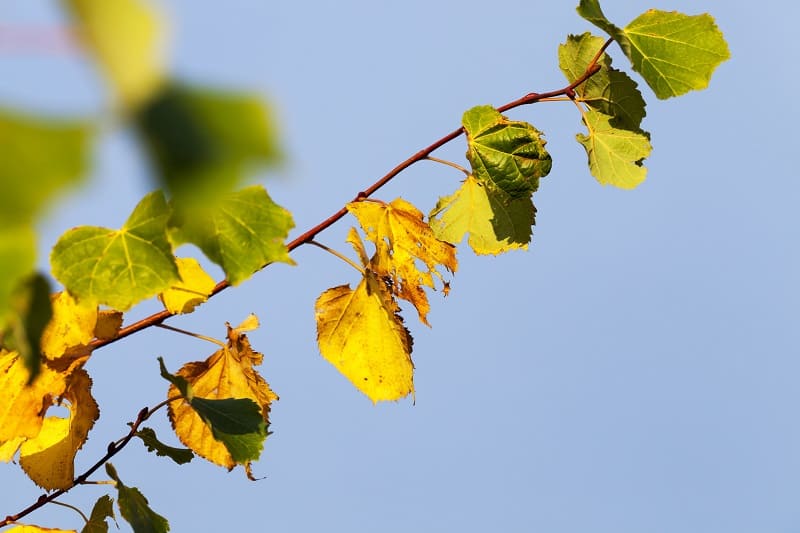
A plant’s leaves turning yellow during flowering can be worrisome for plant owners. It signifies that something is not right with the plant. While plant experts note that leaves do naturally turn yellow, it could also be due to chlorosis, which is the yellowing of leaf tissue due to lack of chlorophyll. If the leaves are turning yellow toward the end of the flowering period, this is called senescence – the natural yellowing and dying off of plants. In this article, you can learn about the possible reasons that leaves turn yellow during flowering, as well as how to fix these issues.
Why do leaves turn yellow during flowering?
These are some common reasons for leaves turn yellow during flowering:
1. It could be due to light burn
If you have indoor plants that are exposed to grow lights, they can also experience light burn. This makes the leaves turn yellow, and affects those that are closest to the light. Although the leaves are dead, they will be difficult to remove from the plants.
Insufficient light can also make leaves turn yellow, especially during the plant’s early life. However, if the discoloration happens during flowering, then insufficient light is not the culprit.
Remedy: Hang the lights higher to lessen the brightness, or opt for dimmable grow lights.
2. It could be due to overwatering or underwatering
Watering your plants too often could result in the yellowing of leaves. The situation becomes worse if the planters or pots do not have good drainage holes. The leaves will also look droopy and swollen if the plants are overwatered. Underwatering could also be the culprit, but this is less common.
Remedy: Use good soil or coco coir, since this drains well and does not hold excess moisture. Water the plants less for at least a few days. When watering, see to it that 10% to 20% of the water spills out of the bottom of the pots. Also, make sure that the planters have drainage holes to ensure that water does not stay stagnant in the soil.
To determine how often you should water, stick a finger into the soil about a knuckle deep. If it feels dry, you need to water the plants. If you are using coco coir, water the plants at least every two days.
3. It could be due to nutrient deficiency
Nutrient deficiency could also be one of the reasons for leaves turning yellow during flowering. These nutrients include nitrogen, iron and magnesium. If plants are nitrogen-deficient, their leaves may turn yellow during flowering, especially the older ones at the bottom of the plant.
Most of the time, these leaves will fall off and the plants will look pale or lime green in color. Sometimes, it could be a pH imbalance that is blocking the nitrogen absorption. While most soils already contain nitrogen, this can get depleted, so you have to supplement for this deficiency. An exception is coco coir, as this does not contain nitrogen.
Inversely, too much nitrogen can also turn leaves yellow, but in this case the remaining leaves will look dark green rather than lime green.
Magnesium-deficient plants will also have yellowing leaves, although the veins remain green. Iron-deficient plants also manifest discoloration and new leaves start as yellow but eventually become green.
Remedy: Add supplements such as magnesium, iron and nitrogen to enrich the soil and to prevent yellowing of the leaves.
4. It could be due to the presence of pests
Pests can cause leaves to turn yellow. These insects invade plants and suck their juice or sap. To check for pests, inspect your plants carefully and identify what kind of pests they are. Common pests include aphids, spider mites, whiteflies and fungus gnats.
Remedy: Spray the plants with isopropyl rubbing alcohol or a liquid soap and water mixture. Remove the pests manually, or opt for organic pesticides such as neem oil.
Conclusion
Leaves yellowing during flowering is a cause for concern, especially if there are other symptoms of an unhealthy plant. The common reasons for leaves to yellow during flowering are over- or underwatering, light burn, and insufficient light. It could also be due to a pest infestation or nutrient deficiency.
Image: istockphoto.com / ligora